Whether you’re looking to cut back on water use in the garden because of drought (hello, California!), or simply because you’d like to spend more time enjoying your yard and less time watering it, making the most of this precious resource starts with the right design and the right plants. Here are 10 yards with creative solutions to the quandary of how to use less water.
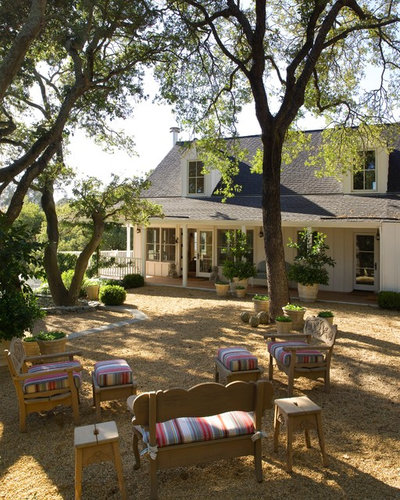
Butler Armsden Architects
1. Shade some gravel with trees. For a highly usable, water-wise and budget-conscious backyard design, you can’t get much better than gravel. But since a large expanse of gravel can look dry (and feel hot), punctuate your yard with trees that will grow tall enough to provide shade and greenery, and that will do well in your climate.
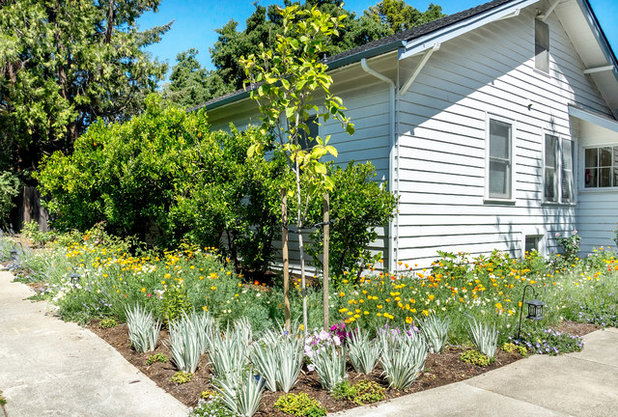
Casa Smith Designs, LLC
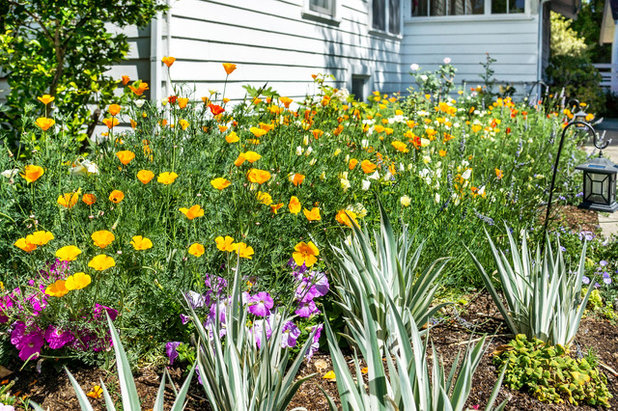
Casa Smith Designs, LLC
2. Grow native species. Just because you want to be water wise doesn’t mean you need to forgo flowers; look to species native to your area for plants that will thrive with little assistance on your part. In this charming California farmhouse side yard, mixed water-wise flowers (including lots of California poppies) are colorful and easy to care for.
Plants: variegated iris, California poppy, French lavender, creeping morning glory
10 Top California Native Plants, Trees and Grasses
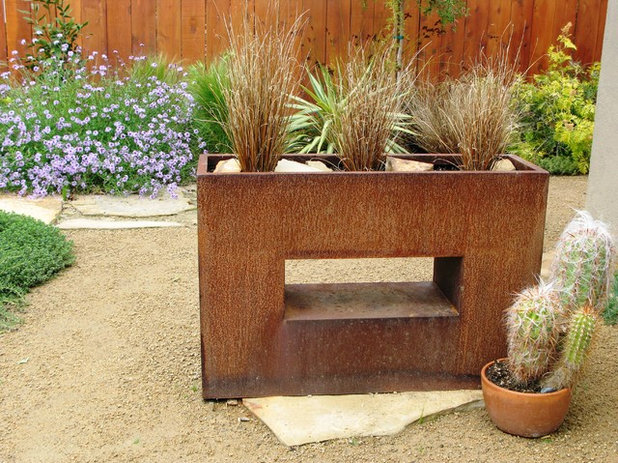
debora carl landscape design
3. Use artful planters. If you fill much of your yard with a material like gravel, add color with a few carefully selected planters. A beautiful planter, like the weathered copper one shown here, can be as much a focal point as the plants growing in it. Just one or two special planters can bring life to a cement patio or gravel yard — use native grasses in a tall planter for privacy, plant a small tree in an oversize pot or grow edibles right outside your kitchen door.
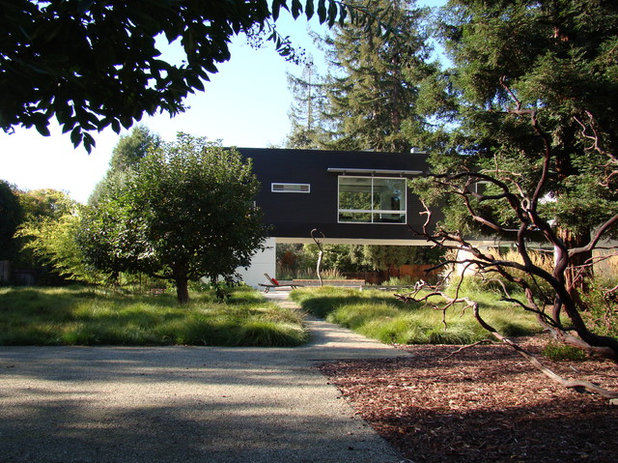
Randy Thueme Design Inc. - Landscape Architecture
4. Plant a lawn alternative. Traditional lawns are like water-sucking sponges — but you can choose a type of grass that requires less water (and zero mowing) for a lush, meadow-like look. Just be aware that grasses of this type can be a bit lumpier to walk and play sports on, so they are better used in outdoor areas that get less traffic.
Grass: Carex pansa
7 Low-Maintenance Lawn Alternatives
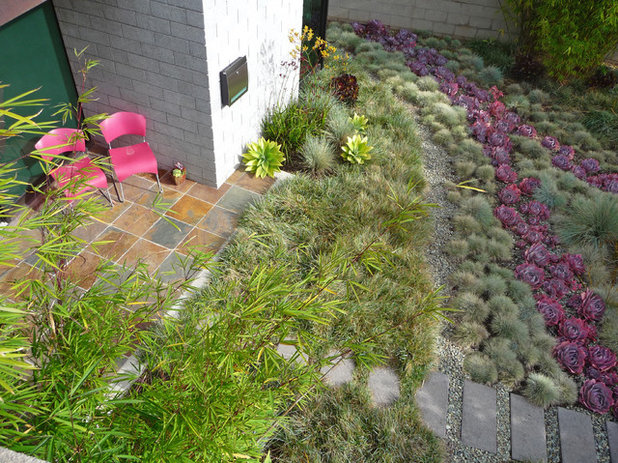
Kiesel Design - Landscape Architecture
5. Add rivers of color. Succulents and grasses come in a rainbow of hues — why not work with the spectrum and put in your drought-friendly plants by color for a unique look? These homeowners replaced the front lawn with ribbons of colorful, low-maintenance Echeveria and fescue.
Plants: purple plant is Echeveria ‘Afterglow’; blue bunch grass is Elijah Blue fescue; greener plant is blue moor grassSee 6 Yards Transformed by Losing Their Lawns

Randy Thueme Design Inc. - Landscape Architecture
6. Mass a single type of water-wise plant. Mixed perennial beds are beautiful, but they can be tricky to care for, especially if there are plants with different water needs in the same bed. Keep things easy by choosing one variety of low-water plant, and use it to fill an entire bed or side yard for a simple but striking look.
Plant: AeoniumGreat Plants for Lush, Low-Water Gardens
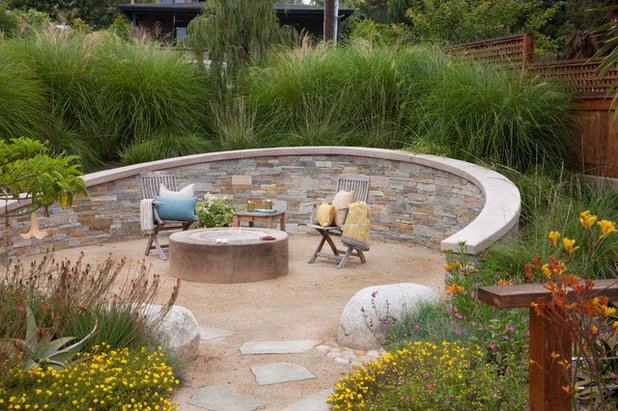
Sage Outdoor Designs
7. Build your design around outdoor rooms. Carving out destinations in your backyard is a smart design move that will enhance your yard’s usefulness and let you reduce the footprint (and water needs) of planting beds. Try a dining area or an outdoor kitchen near the house, and a lounge or fire pit area at the end of a curving path, and plant tall grasses behind seating areas for coolness and privacy.
Grass: Miscanthus sinensis
; gravel: decomposed granite in Palm Springs Gold
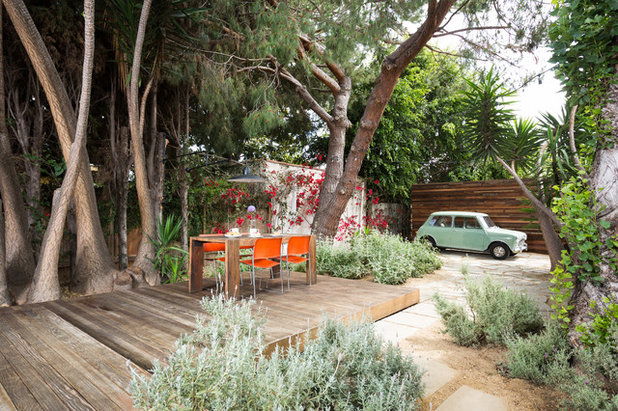
Hsu McCullough
8. Make open space inviting with decks. If you want to add more living space and cut back on grass but find gravel and cement unappealing, consider a deck. Decks are natural gathering spots for people — and when surrounded by drought-tolerant plants, such as the lavender and Jerusalem sage shown here, the yard can feel lush and inviting without requiring much water.
Plants: lavender and Jerusalem sage; trees: yuccaSee more of this Los Angeles home and garden
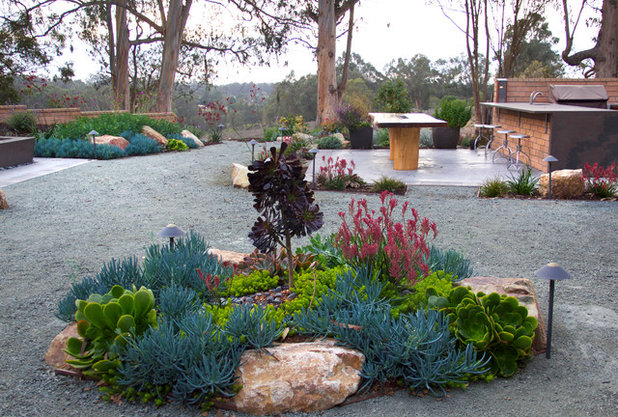
All Seasons Gardening and Landscaping
9. Downsize planting areas. Reducing the footprint of the planting beds in your yard is one way to cut back on water use. In this San Luis Obispo, California, garden, smaller islands filled with drought-tolerant plants punctuate a mostly gravel yard, adding color and lushness without requiring too much precious California water.
Plants: Senecio mandraliscae
, Aeonium ‘Zwartkop’
and ‘Mint Saucer’
, Anigozanthos ‘Bush Pearl’
and sedum
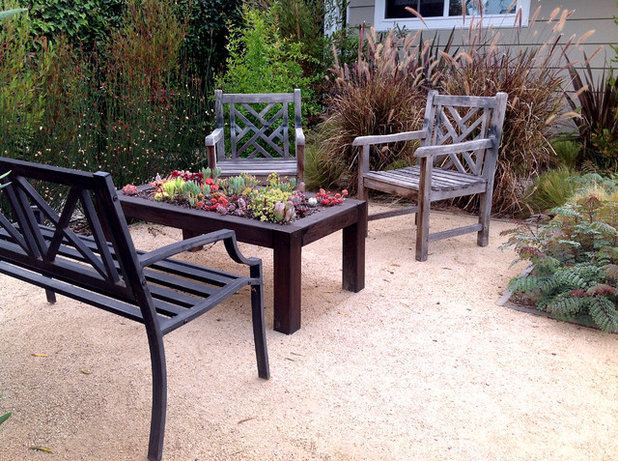
Camille Beehler Landscape Design
10. Use small plants where you can see them up close. Even the tiniest touch of green can make a big impact when used in the right spot. Consider using an outdoor coffee or dining table to showcase your favorite small specimens of succulents or a miniature fairy garden — it’s sure to be a conversation starter.
Tell us: Do you have a water-wise garden? Share a photo in the Comments!





